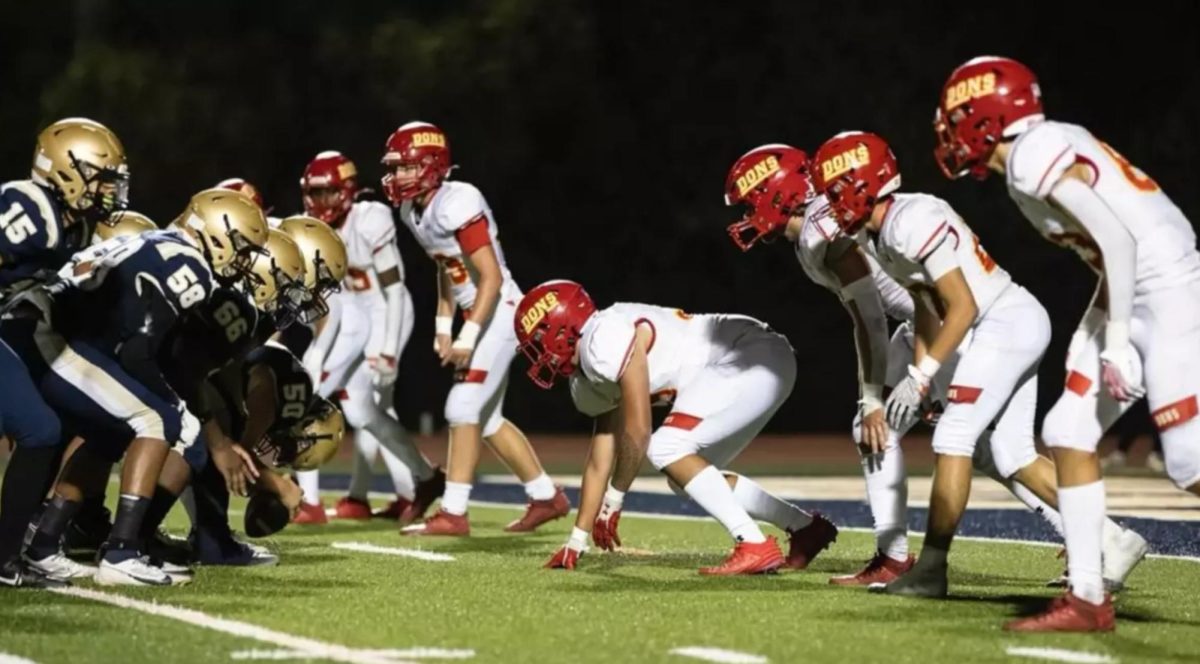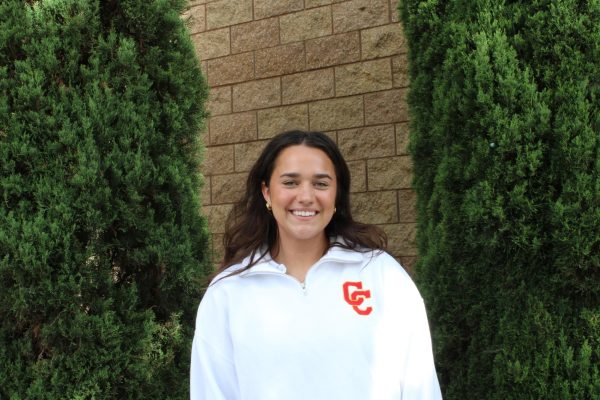Why are CCHS athletes being barred from playing high school sports? This question circulates as Cathedral’s star athletes sit on the sidelines due to their ineligibility.
While the CIF transfer guidelines tend to impact only a small percentage of Cathedral athletes every year, this year’s influx of transfers creates a new narrative, raising concerns regarding the overwhelming rules CIF has regarding transfers.
The lengthy 19-page guidelines related to transfer eligibility for athletics state certain bylaws that are designed to “reinforce the principle that students attend school to receive education first; athletic participation is secondary.” While this rule sounds just, it leaves lots of room for different interpretations and treatments we see on our turf.
Between transferring to a new school, adjusting to new student life, and navigating the CIF Transfer Eligibility guidelines, students, parents, and coaches are filled with frustrations and tough choices.
Cathedral’s varsity head football coach Sean Doyle finds the rule very perplexing.
His stance on the rule is solely based on his players; he states that CIF is “not doing right by the kids.” As he puts it, “I think the rule is silly and there needs to be some clarity.”
Coach Doyle is motivated by his football team and right after the season comes to an end he will be traveling to CIF San Diego and to CIF Headquarters in San Francisco to get some communication for his player’s sake.
Not only does the rule confuse a coach who has been coaching at Cathedral for 39 years but it also brings extreme confusion for our student-athletes. Players are presented with several options to take to start playing games again.
Along with Doyle, varsity wide receiver Parker Johnson ‘26 needs some clarification on the rule, he says that “I moved [homes] thinking I’d be able to play, yet I still have to sit for 5 weeks.” He states that he “would love to see the rule change for future athletes in California.”
The first option is the hardship route, which is where a prior varsity student-athlete transfers schools without needing to physically move to a new home, due to a compelling circumstance outside their control. For example, documented hardships would include a safety incident at their previous school or having to move homes due to recently divorced parents.
The other option is moving into the school’s region to be eligible to play in games. Students like Brady Palmer, Victor Velasquez, and Asofa Laufi took this route allowing them to play the whole season or only miss a few games.
Lastly, a player can just go through the full sit-out period which, for Cathedral, cuts off after 5 games. Athletes like Honor Faalave and Parker Johnson are taking this path.
Many supporters of these guidelines argue that without them, schools and coaches will be able to create these “super teams” of elite athletes. If transfers are eligible to play immediately, some schools could gain an unfair advantage in athletics over schools that don’t have the time and resources to entice the best of the best toward their school.
However, defenders of the CIF transfer eligibility guidelines don’t take into account the players’ mental side of their sport.
Varsity starting left tackle Victor Velasquez ‘26 admits that the transition to new schools “hasn’t been easy. I didn’t fully grasp all that was involved and how it would impact my whole family.”
CIF doesn’t realize that their guidelines are impacting those on and off the field. Families are making huge sacrifices just for their students to play where they want, and CIF doesn’t have any grace for that.
Athletes are constantly working hard to compete in the sport they fall in love with. Between having to leave friends behind, moving homes, and moving schools, CIF isn’t allowing high school athletes to take advantage of the four years they have and that takes a toll on players.
Athletics in high school go beyond just winning championships or assembling star teams. Ultimately, CIF should keep in mind that students are aiming to make positive memories and find joy in their high school experience. To support this CIF should focus on developing clearer and more streamlined rules that make it easier for transfer students to participate in sports.























































Christopher Sturr • Sep 18, 2024 at 9:51 AM
I like ho this shows perspective from both sides. How the cig wants to reduce super teams and keep it fair. Although it takes a toll on familys.
Rebecca Kalkin • Sep 18, 2024 at 9:45 AM
I think CIF isn’t taking the players into consideration and just the logistics for this rule. I really liked how this article stated all sides of the argument.
Nick roberts • Sep 18, 2024 at 8:49 AM
I think that CIF should have more grace when it comes to transfer students. The parents sacrifice so much for the athletes.
Aidan McCotter • Sep 18, 2024 at 8:19 AM
This article was great for informing me on some of the unfairness within CIF. I thought the personal experiences of how some of the athletes were affected was very informative.
Carlo Miller • Sep 18, 2024 at 8:17 AM
I found it interesting that somebody moved to play but they still couldn’t. I think that this rule is very confusing if it is a 19 page guideline. I think they need to make this rule more clear or change it.
Landon Coffman • Sep 18, 2024 at 8:13 AM
My belief is the CIF transfer policy does not think about the players future rather how it affect others, and my opinion is that CIF should look for alternatives solutions to help both the players and the school.
Victor Velasquez II • Sep 18, 2024 at 8:12 AM
This was a great article I liked how you mentioned Someone who does support CIF’s side and An Athletes side, how it affects family and takes a toll on them.
Andy S. • Sep 18, 2024 at 8:12 AM
I really like that you got the points of views of some of the athletes that were affected due to the rules. This article was very informative it helped me better understand the struggles transfer athletes go through.
Brady Palmer • Sep 18, 2024 at 8:10 AM
This transfer rule affects a lot of families including mine more than people think. We had to go through a harder process than this article describes, which lasted 7 months. CIF is not at all cooperative and seems as if they do anything they can to keep us off the field.
Chloe Mullen • Sep 17, 2024 at 8:12 AM
Wow! This article is awesome. With great student and teacher perspectives, this article is very well written too.